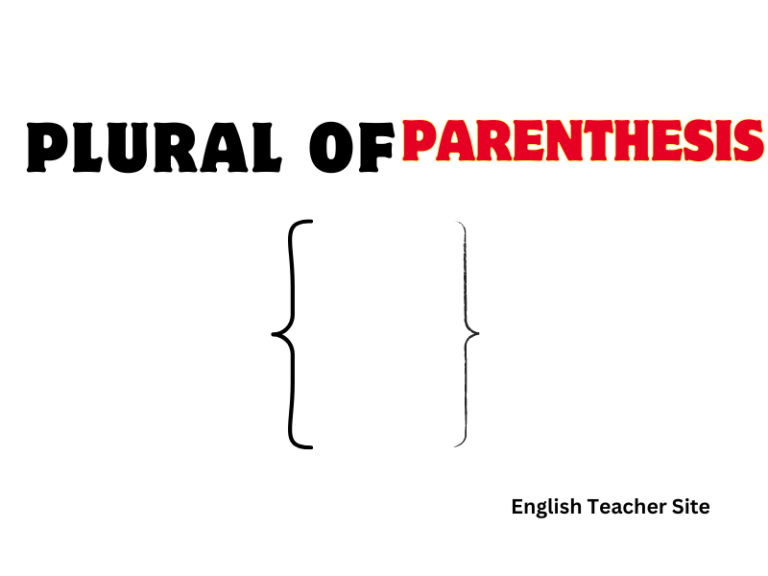What’s the Plural of Moose: Understanding English Irregular Plurals

- The correct plural of “moose” remains the same as the singular.
- “Moose” is derived from an Algonquian word and retained its original pluralization.
- English includes “stubborn nouns” like “moose,” which do not follow typical pluralization rules.
The reason “moose” keeps the same form in both singular and plural stems from its linguistic origins. Borrowed from an Algonquian language of the Native Americans, “moose” was integrated into English without alteration to its plural form. This peculiarity makes it part of the category often referred to as “stubborn nouns,” which encompass words that resist the conventional methods of pluralization found in English. Highlighted in various contributions in media and literature, the word “moose” has had multiple occasions to cause both confusion and clarity in the understanding of English grammar.
What’s the Plural of “Moose”?
The correct plural of “moose” is simply “moose.” The explanation for this exception traces back to its origins. Moose is derived from Algonquian languages, and it has preserved the plural form from its original language, which does not follow the usual pattern of English plural nouns.
Here is a breakdown of the singular and plural forms for clarity:
| Singular | Plural |
|---|---|
| moose | moose |
When using the word in sentences, no change occurs from singular to plural:
- I saw a moose.
- I saw several moose.
When individuals inadvertently add an “s” or transform the word into “meese,” they are applying a pattern uncharacteristic of “moose.” This table showcases common misconceptions and the correct form:
| Incorrect Plural | Correct Plural |
|---|---|
| mooses | moose |
| meese | moose |
Why is “Moose” the Plural of “Moose”?
Origins of the Word “Moose”:
| Origin | Description |
|---|---|
| Algonquian Languages | “Moose” was adopted from Native American languages and was not adjusted to English plural norms. |
English Pluralization Exceptions:
| Standard Plural | Exceptions | Example |
|---|---|---|
| -s or -es | Irregular plurals | “sheep” |
| Same singular and plural | “moose” |
Let’s consider the etymology and pluralization rules that influence the way words are structured. Unlike words imported from Latin or Greek, which often take on more anglicized plural forms, “moose” did not conform to the typical patterns of English pluralization due to its Native American roots.
- Consistent form: Both as a linguistic quirk and a matter of practical usage, having “moose” remain the same in both singular and plural forms provides consistency that is actually found in a few other English nouns as well.
Stubborn Nouns (Single-Form Nouns)
Characteristics of Single-Form Nouns:
- Consistent: They stay the same in both singular and plural contexts.
- Invariable: Their spelling does not change based on number.
- Unmarked: They do not receive typical plural markers like ‘s’, ‘es’, or ‘ies’.
Examples of Single-Form Nouns:
| Singular | Plural | Observations |
|---|---|---|
| moose | moose | Used for both singular and plural. |
| sheep | sheep | No distinction between counts. |
| deer | deer | Identical in both forms. |
In addition to animals, this category encompasses other nouns:
| Category | Examples |
|---|---|
| Game and fish | salmon, trout, bison |
| Aircraft | aircraft, spacecraft |
| Nationalities | Chinese, Swiss |
- Determiners help establish quantity without altering the noun form.
- Quantifiers provide context to indicate more than one.
Recent Examples with “Moose” in the Media
| Title | Description |
|---|---|
| Life in the Wild: Alaska | This documentary series recently featured an episode titled “The Majestic Moose”, bringing the splendor and challenges of moose in the wild to the forefront. |
| Forest Friends | An animated TV show charmingly called “A Moose Clever Moose,” spotlighting a moose character named Marvin and his escapades with other forest creatures. |
- Documentaries: Topics often range from the animal’s ecology to conservation efforts, utilizing the word “moose” frequently to describe singular or multiple animals.
- News Reports: Local news segments sometimes cover humane stories about moose often using the plural form correctly within their narrations.
Children’s Literature: Books like Molly the Moose Finds Friends rely on the word to engage young readers in learning about nature and friendship.
Educational Videos: Online platforms and educational channels input on the unique pluralization of “moose” when creating content about wildlife.
Examples of Sentences with “Moose,” Singular
Sentences Using “Moose” in Singular Form
| Sentence Example | Explanation |
|---|---|
| A moose was spotted near the campground. | Indicates a single “moose,” emphasizing the noun’s singularity. |
| She observed the majestic moose by the brook. | Highlights the animal in a singular form without pluralizing. |
Contextual Usage of Singular “Moose”
- The moose is known for its large antlers.
- Indicates one individual of the species.
- Traffic halted as a moose crossed the road.
- Describes a single event featuring one “moose.”
Examples of “Moose” as a Plural, in Sentences
Here are some example sentences using “moose” in its plural form:
Simple Sentences:
- A herd of moose was spotted near the riverbank.
- Two moose are grazing in the meadow.
Compound Sentences:
- The child saw a moose by the stream, but her parents were amazed to see five more.
- Photographers captured images of moose, and the community was thrilled with the attention to local wildlife.
To further illustrate, consider the following tables containing example sentences:
Table 1: Subject-Verb Agreement with “Moose”
| Singular | Plural |
|---|---|
| The moose is crossing the road. | The moose are crossing the road. |
| This moose seems friendly. | These moose seem friendly. |
Table 2: “Moose” in Contextual Sentences
| Context | Sentence |
|---|---|
| Observation of wildlife | Tourists often spot moose in this national park. |
| Commenting on wildlife behavior | The moose often migrate to this area in winter. |
What’s the Singular of “Moose”?
Singular vs. Plural:
| Moose | Plural |
|---|---|
| Moose | Moose |
In the above table, it is clear that the term remains unchanged whether referring to one or multiple animals.
Key Notes:
- The singular form “moose” refers to one animal.
- The word originates from Algonquian languages, such as the Narragansett term “moos.”
- “Moose” is an exception in English where the singular and plural forms are identical.
- This format is common in various wildlife nouns such as “sheep” and “deer.”
Common Misconceptions:
- Meese is often wrongly assumed as the plural form.
- Mooses is a pluralization error, not unlike “meese.”
What Do You Call a Male and Female “Moose”?
For male moose, the correct term is bull. Bull moose are known for their imposing presence and the large antlers they sport during certain times of the year. These antlers serve multiple purposes, including defense and as a display during mating season to attract females.
Female moose, on the other hand, are referred to as cows. Unlike the males, cows do not have antlers. They are often the primary caregivers to their young and play a significant role in the continuation of the species through reproduction.
Below are tables that summarize the terminology:
Male Moose:
| Age Group | Name |
|---|---|
| Adult | Bull |
| Juvenile | Young Bull |
Female Moose:
| Age Group | Name |
|---|---|
| Adult | Cow |
| Juvenile | Young Cow |
Moreover, here are a few points to remember:
- Bulls, especially during the rut, can be quite aggressive.
- Cows are mainly responsible for raising the offspring, known as calves.
- Calves stay with their mother for up to a year before becoming independent.
Origin of the Word “Moose”
The word “moose” is an intriguing linguistic artifact, showcasing the blend of various cultures. The term traces its roots back to the native languages of North America. Specifically, “moose” originates from the Eastern Algonquian language, which was spoken by the Algonquian peoples of the Atlantic Coast and Great Lakes region.
| Language Family | Word Origin |
|---|---|
| Algonquian | moosu |
| Narragansett | moòs |
In these native tongues, the word referred to the animal’s characteristic of “stripping” or “eating off” bark from trees—a behavior that is typical for moose. As European settlers encountered the majestic creature, the term was Anglicized to “moose”, preserving its unique pronunciation and plural form.
- The original word in Algonquian: moosu
- Anglicized version: moose
The plural of “moose” remains the same as the singular form, which is an irregularity in English but common in some Algonquian languages. This defiance of the conventional English “s” or “es” pluralization rule emphasizes its storied origin.
Other Terms:
- Eastern Algonquian languages: Provided words like “skunk” and “squash.”
- Narragansett: Contributed terms such as “pumpkin” and “moose.”
English adopts many terms from different languages, and “moose” is a classic example of this linguistic diversity. The preservation of its original plural form in English respects its etymological heritage and enriches the language’s history. This lack of change in form from singular to plural is due to the word’s retention of the pluralization rule from its language of origin rather than conforming to the typical plural forms in English.
Sources
- The Elk House
- Origin of moose
- Plural of animals quiz
- Wikipedia contributors. “Germanic umlaut.” Wikipedia, The Free Encyclopedia. Wikipedia, The Free Encyclopedia.
- Geist, Valerius. “moose”. Encyclopedia Britannica.
My name is Khamis Maiouf. I am the creator of the English Teacher Site, dedicated to providing valuable resources and insights for students around the world. With a passion for education and a commitment to helping students enhance their skills, I aim to make English teaching more effective and enjoyable for both educators and students.






